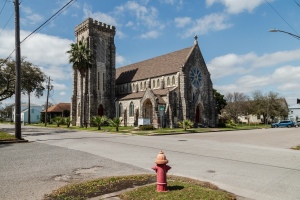Archaeologists excavate tomb of 'Jesus' midwife,' find hundreds of artifacts

Archaeologists uncovered hundreds of artifacts in an ancient Jewish burial cave in Israel that is believed by some to have been the tomb of a midwife present at the scene of Jesus’ birth based on the narrowly accepted apocryphal Gospel of James.
The Gospel of James, which is not the same as the Book of James found in the Bible, is one of the second-century apocryphal texts — which are a collection of scriptural texts written by early Jewish-Christian writers that fall outside the Holy apostolic-based Bible or canon.
A team of archaeologists from the Israel Antiquities Authority (IAA) discovered hundreds of lamps in a burial cave in the Lachish region in central Israel that are believed to have belonged to early Christians who went on pilgrimages into the tomb.
According to the IAA, the burial cave continued in use during the Byzantine and Early Islamic periods and became known as "Salome Cave" because of a "popular tradition that identified it as the burial place of Salome, the midwife of Jesus."
The excavation was part of the Judean Kings’ Trail Project led by the IAA, the Ministry for Jerusalem and Heritage and the Jewish National Fund.
Researchers uncovered a row of shop stalls that sold or rented clay lamps when excavating the courtyard.
“In the shop, we found hundreds of complete and broken lamps dating from the 8th–9th centuries [A.D],” Nir Shimshon-Paran and Zvi Firer, excavation directors in the Israel Antiquities Authority Southern Region, said in a joint statement. “The lamps may have served to light up the cave, or as part of the religious ceremonies, similarly to candles distributed today at the graves of righteous figures, and in churches.”
The burial cave became a hot spot for pilgrimages among local Christians after the area was recognized as Salome’s burial place in the Byzantine era, Firer told The Times of Israel.
“The name Salome may possibly have appeared in antiquity on one of the ossuaries [stone boxes] in the tomb, and the tradition identifying the site with Salome the midwife developed, with the cave becoming venerated by Christianity,” Firer was quoted as saying.
The apocryphal texts, which include the Gospel of James, are a series of writings that give various accounts of Mary, Joseph, Jesus and his teachings, the nature of God, or the teachings of his apostles and of their lives.
Many Christian scholars and theologians have questioned the validity of the events told in the apocryphal writings.
The Gospel of James tells the story of Jesus’ nativity as having been done in a cave located in the Lachish region in central Israel, instead of in a manger in Bethlehem as recorded in the Bible.
The writings also describe Mary as having two midwives. One of the midwives is not given a name, but the other midwife is named Salome, who is believed to have shown up directly after Jesus’ birth.
In the apocryphal text, when Salome enters the cave directly after Jesus’ birth, she has an injured hand. She holds the infant Jesus and she receives miraculous healing in her hand. Following the healing, she is believed to have become a follower of Jesus.
Apocryphal writings also include accounts from characters not mentioned in the Bible but are believed by some to have walked the earth during Christ’s time.
The apocryphal stories often take a different approach to the canonical Scripture and tend to elaborate on different aspects of Scripture in accounts that are different from the Holy Bible.
Some Christian, Eastern Orthodox and Roman Catholic faiths today acknowledge the apocryphal texts as being either partially or fully truthful.
Those who believe in the truthfulness of the stories think that even though the writings aren't included in Bible, all of the texts are sanctified and were orchestrated by God for His divine plan.
Some believe that Apostle James, who wrote the New Testament's Book of James, was the writer of the apocryphal text.
“I would say — James didn’t write it. It’s an apocryphal gospel,” R. Steven Notley, professor of New Testament and Christian Origins at New York’s Alliance University (formerly Nyack College), told Haaretz.
Notley was not involved in the Salome Cave excavation but has been involved in other projects, including the site of Bethsaida by the Sea of Galilee.
Notley said the Gospel of James is often acknowledged as a writing that used to fill in the blanks to answer questions and doubts that early Christians had about the truthfulness of the virgin birth.
“It’s like a Christian midrash,” he noted, adding that James could not have written the "Gospel of James" because the text was written in the second century.
The Catholic Church, some Lutherans, Anglicans and other Protestants adhere to the "perpetual virginity of Mary" doctrine. St. Jerome authored “The Perpetual Virginity of Blessed Mary: Against Helvidius," which first appeared in 383 A.D. St. Jerome contends that no midwife assisted at Christ's birth.
"[N]o women’s officiousness intervened,” the document reads.
“With her own hands she wrapped him in the swaddling clothes, herself both mother and midwife.”
Nicole Alcindor is a reporter for The Christian Post. She can be reached at: nicole.alcindor@christianpost.com.





























